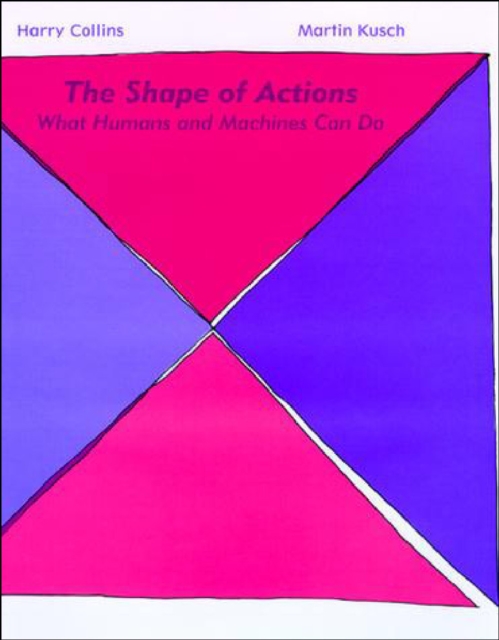
The Shape of Actions : What Humans and Machines Can Do PDF
by Harry Collins, Martin Kusch
Part of the The MIT Press series
Description
What can humans do? What can machines do? How do humans delegate actions to machines? In this book, Harry Collins and Martin Kusch combine insights from sociology and philosophy to provide a novel answer to these increasingly important questions.The authors begin by distinguishing between two basic types of intentional behavior, which they call polimorphic actions and mimeomorphic actions. Polimorphic actions (such as writing a love letter) are ones that community members expect to vary with social context. Mimeomorphic actions (such a swinging a golf club) do not vary. Although machines cannot act, they can mimic mimeomorphic actions. Mimeomorphic actions are thus the crucial link between what humans can do and what machines can do.
Following a presentation of their detailed categorization of actions, the authors apply their approach to a broad range of human-machine interactions and to learning. Key examples include bicycle riding and the many varieties of writing machines. They also show how their theory can be used to explain the operation of organizations such as restaurants and armies. Finally, they look at a historical case-the technological development of the air pump-applying their categorization of actions to the processes of mechanization and automation. Automation, they argue, can occur only where what we want to bring about can be brought about through mimeomorphic action.
Information
-
Download - Immediately Available
- Format:PDF
- Pages:224 pages
- Publisher:The MIT Press
- Publication Date:05/01/1999
- Category:
- ISBN:9780262270687
Information
-
Download - Immediately Available
- Format:PDF
- Pages:224 pages
- Publisher:The MIT Press
- Publication Date:05/01/1999
- Category:
- ISBN:9780262270687










